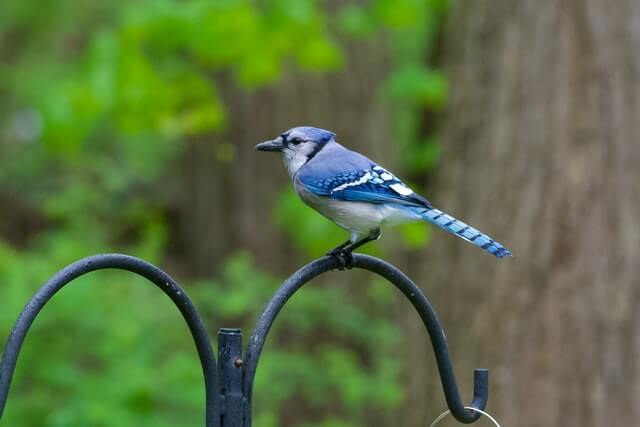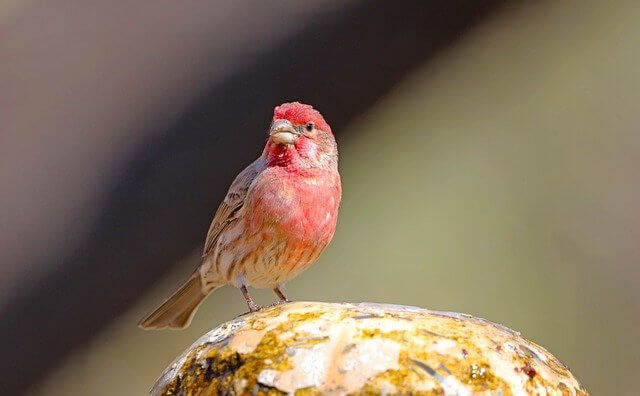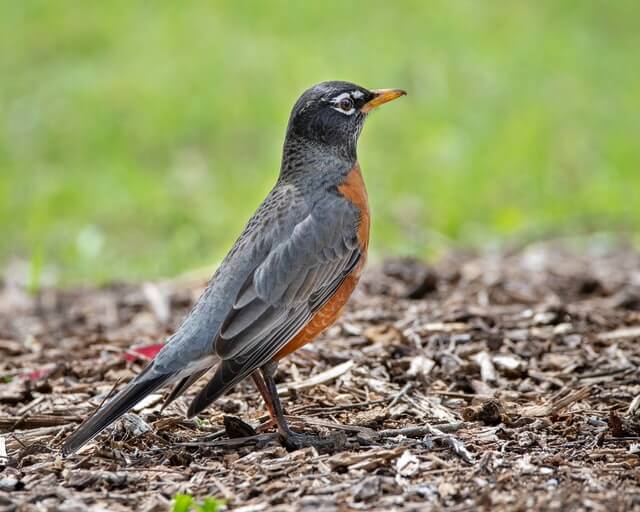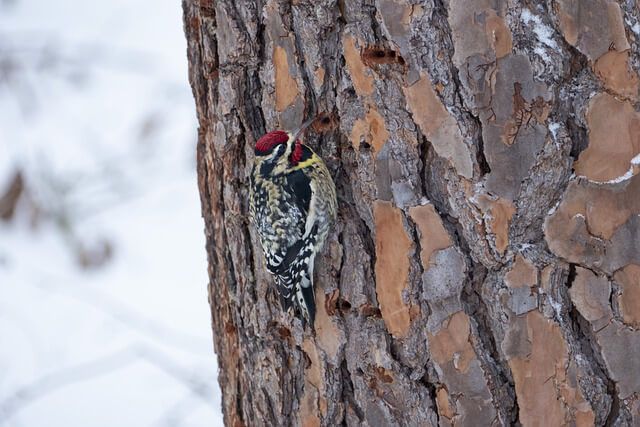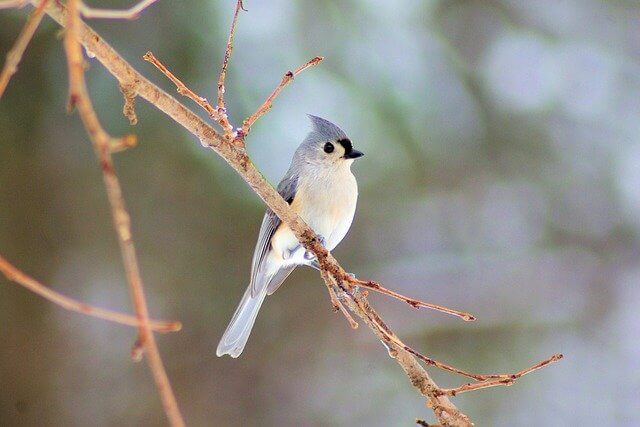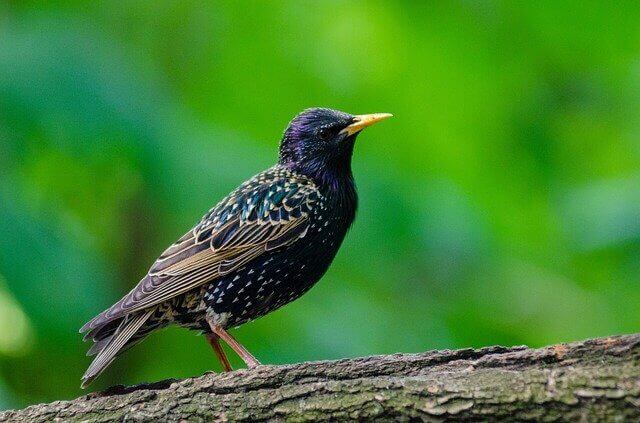If you’re the proud owner of fruit-bearing trees in your backyard, you’re likely well aware of the avian attraction they present. Fruits, with their rich nutrients and energy content, serve as a delectable feast for numerous bird species.
In this article, we’ll delve into the world of 21 backyard birds that have a penchant for fruit, exploring both their fruit-filled preferences and the delight they bring to your outdoor space.
Table of Contents
- 1 Backyard Birds That Eat Fruit
- 1.1 American Crow
- 1.2 Bluebird
- 1.3 Blue Jay
- 1.4 Indigo Bunting
- 1.5 Gray Catbird
- 1.6 Northern Cardinal
- 1.7 House Finch
- 1.8 Grosbeaks
- 1.9 Northern Mockingbird
- 1.10 Orioles
- 1.11 American Robin
- 1.12 Sapsuckers
- 1.13 Sparrows
- 1.14 Tanagers
- 1.15 Thrashers
- 1.16 Towhees
- 1.17 Waxwings
- 1.18 Vireos
- 1.19 Woodpeckers
- 1.20 Titmice
- 1.21 Starlings
- 2 Author
Backyard Birds That Eat Fruit
American Crow
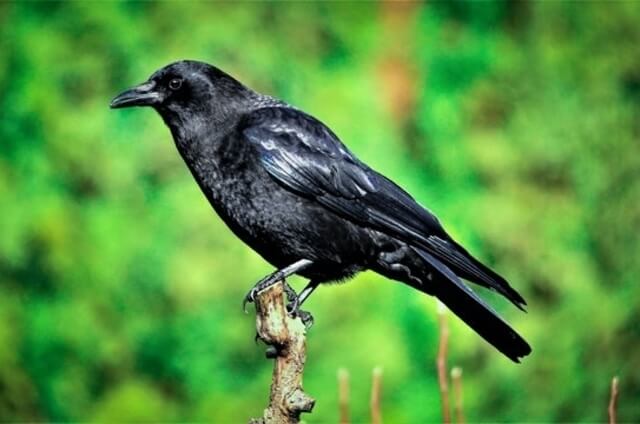
Crows are intelligent creatures that have been observed to communicate with one another. Scientists believe that they may also be capable of communicating the location of food sources, such as fruit trees. Crows can often be seen gathering around fruit trees in the early morning hours and late evening hours when other foods are scarce.
Fruit choices for Crows:
- Oranges
- Apples
- Grapes
- Cherries
- Raisins
- Blueberries
- Blackberries
- Persimmons
Bluebird
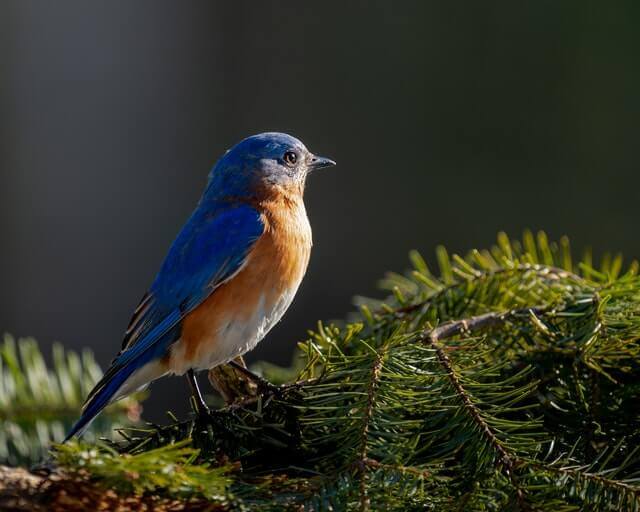
Bluebirds are very common birds in North America. They mostly feed on insects and spiders, but when the season changes from summer to fall they will start eating berries and other types of fruit. Bluebirds enjoy eating the sweet nectar from ripe fruit, as well as small insects that have been caught on the sticky surface of a flower.
Fruit choices for Bluebirds:
- Oranges
- Apples
- Grapes
- Cherries
- Raisins
- Blueberries
- Persimmons
Blue Jay
Have you ever wondered if Jays eat fruit? In a recent study, scientists discovered that Blue Jays will readily consume more than 30 different types of fruits, ranging from figs to blackberries. However, it’s worth noting that they exhibit a preference for ripe fruits. This selective eating behavior suggests that their diet may be somewhat limited in variety but tends to be rich in sugar content.
Fruit choices for Blue Jays:
- Oranges
- Apples
- Grapes
- Cherries
- Raisins
- Blueberries
- Blackberries
- Persimmons
Indigo Bunting
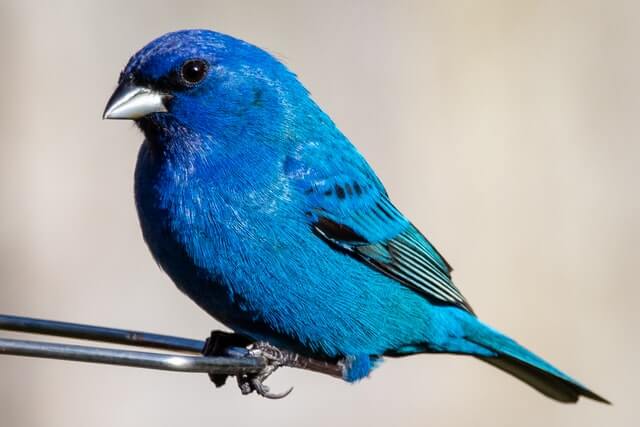
Indigo Buntings, are small birds native to North America, frequently inhabit open fields, perch on power lines, and visit feeders. Fruits play a vital role in the diet of birds like the Indigo Bunting, providing essential vitamins, nutrients, and natural sugars that boost their energy levels. Additionally, the antioxidants found in fruits contribute to maintaining the vibrant appearance of their feathers.
Fruit choices for Indigo Bunting:
- Strawberries
- Blackberries
- Serviceberries
- Blueberries
- Elderberries
Gray Catbird
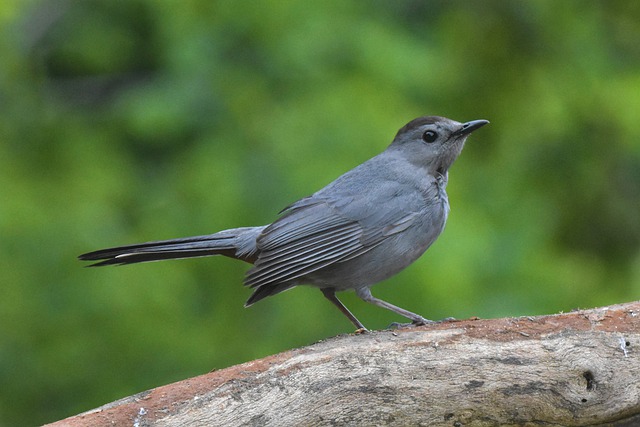
Gray Catbirds exhibit an omnivorous diet, skillfully balancing their meals between fruits, insects, leaves, berries, flowers, seeds, and occasionally even small vertebrates like lizards or frogs. These resourceful birds adapt their feeding preferences based on their current disposition, demonstrating their versatility as omnivores. Whether it’s an animal-based or plant-based food source, catbirds are adept at making the most of nature’s offerings to sustain themselves.
Fruit choices for Gray Catbird:
- Oranges
- Grapes
- Grape Jelly
- Cherries
- Raisins
- Blueberries
- Blackberries
- Persimmons
- Figs
- Bananas
Northern Cardinal

The Northern Cardinal, a frequent visitor to gardens and yards, holds the esteemed title of the state bird in seven states, which include Illinois, Indiana, Kentucky, North Carolina, Ohio, and Virginia. Distinguished by its diverse fruit-based diet, this bird enjoys a wide array of fruits, spanning from crisp apples to succulent grapes and a myriad of berries.
Fruit choices for Northern Cardinal:
- Oranges
- Raisins
- Blueberries
- Blackberries
- Bananas
- Figs
- Mulberries
- Berries
- Cherries
House Finch
House finches, petite and adorned in vibrant red plumage, are a common sight across North America and some regions of South America. These charming birds have a penchant for fruit, utilizing it as a vital source of nutrients and energy. Their dietary preferences revolve around a medley of seeds, berries, assorted fruits, and even the occasional insect, such as ants or caterpillars.
Fruit choices for House Finch:
- Oranges
- Apples
- Blueberries
- Blackberries
- Cherries
- Figs
- Mulberries
- Serviceberries
Grosbeaks
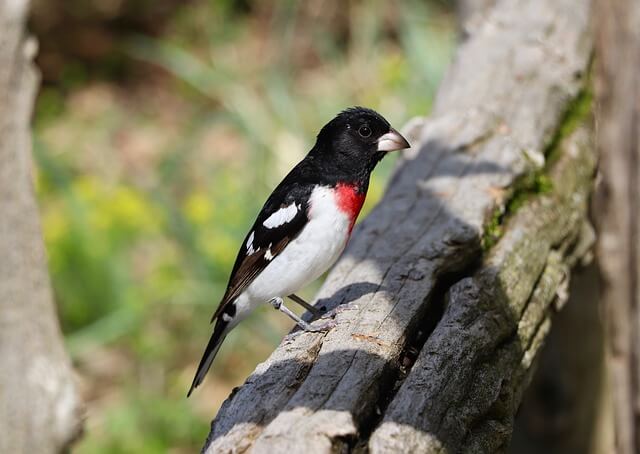
Grosbeaks are large birds that eat mostly seeds, but they sometimes eat fruit. Grosbeaks are large birds that eat mostly seeds, but they sometimes eat fruit. They like to live in places with a lot of trees and bushes because this is where the food is for them. These types of places also provide protection from their natural predators like hawks and owls.
Fruit choices for Grosbeaks:
- Oranges
- Apples
- Blueberries
- Blackberries
- Elderberries
Northern Mockingbird
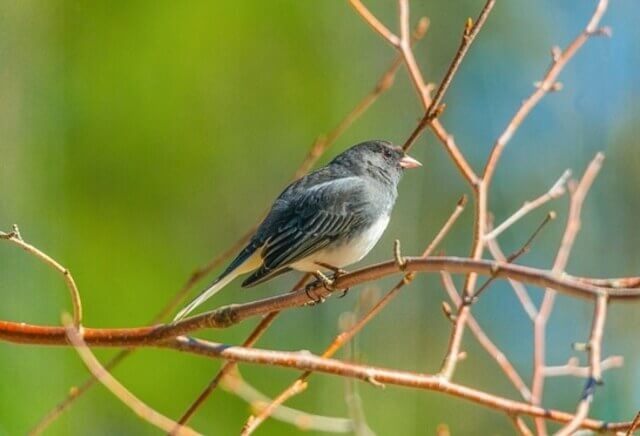
Northern Mockingbirds are an abundant species of bird that is found throughout North America. They live in a variety of habitats and feed on insects, fruit, seeds, and sometimes even small vertebrates. The Northern Mockingbird eats many different types of fruits including grapes, strawberries, blueberries, blackberries, and cherries to name a few.
Fruit choices for Northern Mockingbird:
- Oranges
- Apples
- Grapes
- Cherries
- Raisins
- Blueberries
- Strawberries
- Blackberries
- Persimmons
Orioles

The Baltimore Oriole is a species of songbird in the Icteridae family. Baltimore Orioles are migratory birds and can be found throughout North America, Central America, South America, and into parts of Canada. They primarily eat fruit from trees or plants. They usually live in habitats such as parks, fields with scattered trees or hedges, woodland edges close to open areas like farmlands or wetlands.
Fruit choices for Baltimore Oriole:
- Oranges
- Persimmons
- Blackberries
- Cherries
- Figs
- Mulberries
- Grape Jelly
American Robin
Native to North America, American Robins are prevalent in both the eastern and western regions of the continent. Their diverse diet includes worms, berries, grasshoppers, bugs, and caterpillars. On occasion, when they come across fallen fruits like apples or cherries, robins will readily incorporate them into their menu.
Fruit choices for American Robin:
- Berries
- Raisins
- Grapes
- Bananas (Mashed)
- Ivy berries
- Juniper berries
- Mistletoe
- Blackberries
- Gooseberries
- Strawberries
Sapsuckers
The sapsucker, a woodpecker species prevalent across North America, exhibits a unique dietary preference for fruit, sometimes even developing a partial dependency on this nourishment. Their palate encompasses a variety of fruits, including apples, grapes, blueberries, and strawberries. In addition, when accessible, they readily consume oranges and bananas.
Fruit choices for Sapsuckers:
- Apples
- Oranges
- Bananas
- Cherries
- Grapes
- Blueberries
- Raspberries
- Persimmons
Sparrows
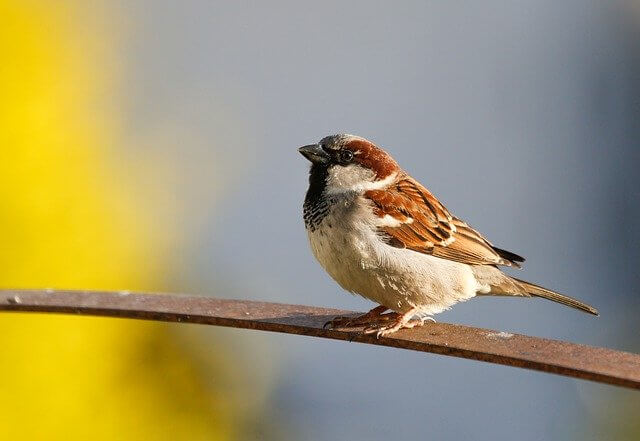
House sparrows, ubiquitous little birds, call nearly every corner of the globe home. Their adaptability knows no bounds, thriving in diverse habitats, from lush gardens to dense forests and bustling urban landscapes. In their native environments, their diet encompasses a medley of insects, seeds, and grains. Yet, when the opportunity arises to plunder fruit-laden trees, house sparrows eagerly gather for a fruity feast.
Fruit choices for House Sparrow:
- Berries
- Grapes
- Apples
- Cherries
- Pears
- Plums
- Peaches
- Nectarines
- Tomatoes
Tanagers
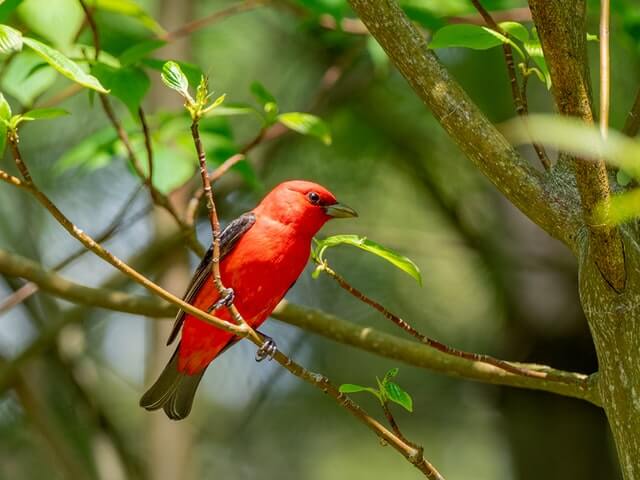
Tanagers inhabit regions across the Americas, extending to certain parts of Europe. Their versatile diet comprises fruits, insects, seeds, nuts, and berries, ensuring their survival. During the summer, their menu is brimming with succulent berries, while with the onset of winter, tanagers transition to a diet rich in insects.
Fruit choices for Tanagers:
- Oranges
- Apples
- Grapes
- Raisins
- Blackberries
Thrashers
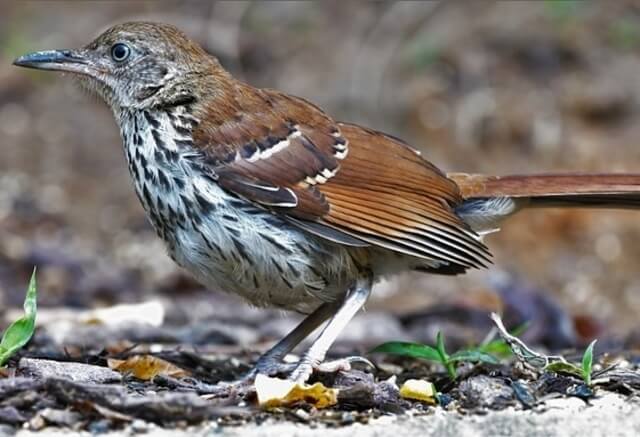
Thrashers, the vibrant songbirds native to the Americas, are known for their small size and colorful plumage. While these birds typically forage in flocks, their diet primarily consists of insects, seeds, and berries. However, on occasion, Thrashers may indulge in certain fruits like blueberries or apples.
Fruit choices for Thrashers:
- Oranges
- Apples
- Raisins
- Blueberries
- Pokeberry
- Elderberry
Towhees
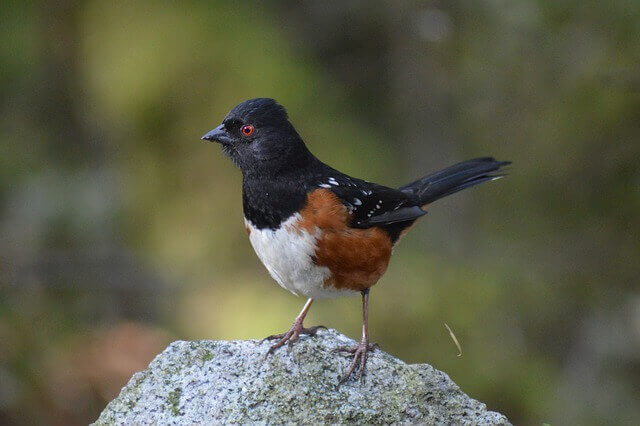
Towhees, small songbirds native to North America, inhabit a range that extends from Canada through the United States, Mexico, and into Central America. These adaptable birds are omnivorous, with their diet shifting throughout the seasons. During the winter, when fruits can be scarce, towhees display opportunistic feeding behaviors and are known to seek out fruiting trees as an essential food source.
Fruit choices for Towhees:
- Oranges
- Apples
- Grapes
- Blackberries
Waxwings
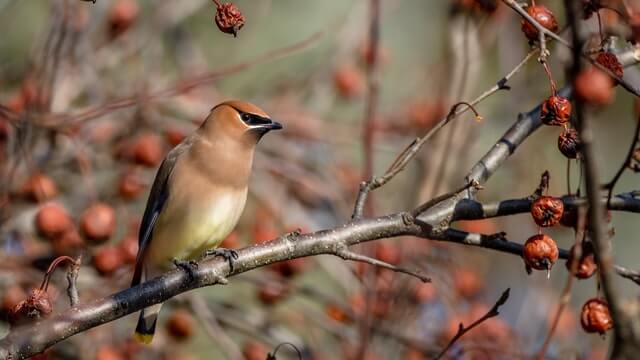
During their breeding season, these birds predominantly feast on berries and various fruits, while shifting their diet to insects during the winter months. Waxwings grace many parks and gardens across the United States during the summer as they migrate to North America, not only for nourishment but also for breeding purposes.
Fruit choices for Waxwings:
- Oranges
- Apples
- Grapes
- Cherries
- Raisins
- Blackberries
- Persimmons
- Serviceberry
- Strawberry
- Mulberry
- Dogwood
- Raspberries
Vireos
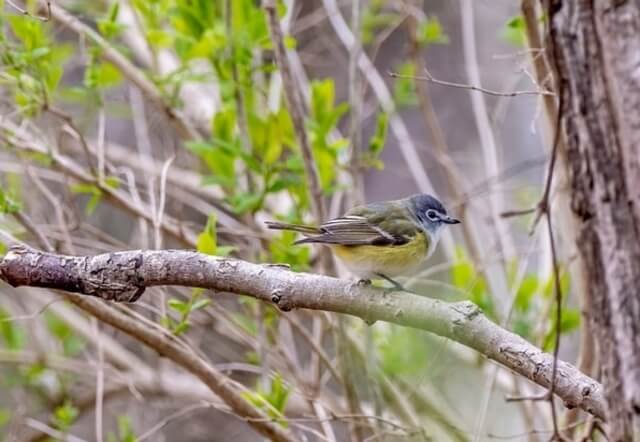
Vireos, small and widespread birds, inhabit the Americas. Among them, the Red-eyed Vireo stands as the most common, gracing North and Central America with its presence. These avian wonders exhibit a diverse diet, relishing fruits like cherries and apples, all while savoring insects and berries in their culinary repertoire.
Fruit choices for Vireos:
- Blueberry
- Cherries
- Apples
- Blackberry
- Sumac
- Dogwood
- Pokeweed
- Wax myrtle
- Bursera trees
Woodpeckers
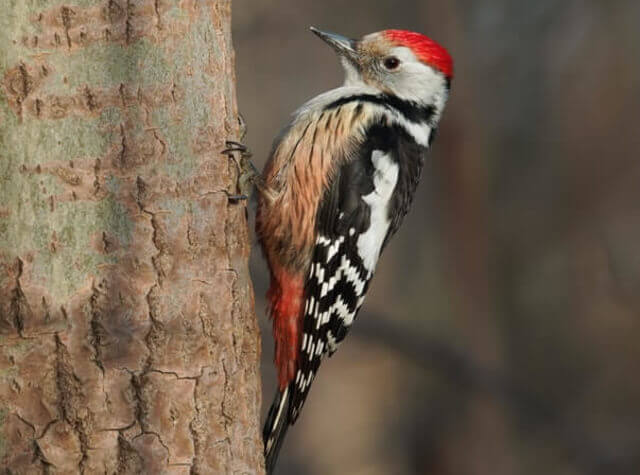
Woodpeckers, known for their distinctive behavior of drumming on trees, have a keen appetite for fruit. These birds are equipped with robust beaks, enabling them to savor a wide array of fruits. Found predominantly in North America and across the Western Hemisphere, woodpeckers are fortunate to dwell in habitats rich in fruit-bearing trees. With this proximity to their preferred food source, woodpeckers can effortlessly forage without the need for extensive flights in search of nourishment.
Fruit choices for Woodpeckers:
- Oranges
- Apples
- Bananas
- Grapes
- Strawberries
- Raisins
- Holly berries
- Blueberries
- Blackberries
- Persimmons
Titmice
Titmice are petite avian creatures with diverse dietary preferences. During winter, they embark on quests for sunflower seeds and insects, battling the cold for sustenance. However, as the seasons turn to summer, nature provides a bounty of fruit, making their dining endeavors more fruitful. If your yard boasts an abundance of fruit trees, you can expect these cheerful titmice to be delighted by the feast nature offers.
Fruit choices for Titmice:
- Apples
- Blueberries
- Blackberries
Starlings
Starlings, native to the United States, are commonly spotted in open fields and areas near water sources. These avian creatures are not only recognizable for their distinct calls but also for their captivating feather patterns. Starlings have a penchant for fruits, comprising a substantial portion of their diet. In fact, their palate encompasses a diverse range of delectable fruits!
Fruit choices for Starlings:
- Oranges
- Apples
- Grapes
- Cherries
- Raisins
- Blueberries
- Blackberries
- Persimmons


